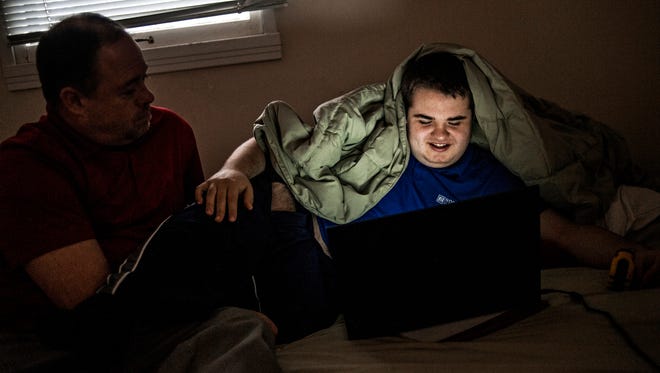Researchers: Don't expand virtual schools as is
New research released Thursday suggests that efforts to quickly ramp up online “virtual” public schools nationwide could have a downside: lower achievement for the students who most need a boost.

Researchers from New York University (NYU) and the Rand Corp. looked at achievement for the nearly 1.7 million students in Ohio who attend K-12 virtual schools, which deliver most or all of their instruction online. They found that lower-income, lower-achieving white students are more likely to choose these schools than other students. Once enrolled, however, students in virtual schools are still performing worse on standardized tests than students in traditional brick-and-mortar public or charter schools.
The online charter school system in Ohio “tends to attract kids who are lower-performing, on average,” said Andrew McEachin, a policy researcher at Rand.
Many of these students are former home-schoolers or rural students looking for better schools. Others are looking for more flexible schedules, have gotten in trouble at school or simply don’t do well in school for many reasons — everything from lousy instruction to bullying.
“It could be a good alternative system for them, theoretically, and I think it’s worth figuring out why these individuals and their families opted out of a traditional brick-and-mortar school,” McEachin said. Parents “are sending a strong signal — at least a small group of them — that there is something (in) traditional brick-and-mortar-type schools that isn’t satisfying them.”
But his fellow researcher, NYU’s June Ahn, said these students need more support, not less. Nonetheless, many virtual schools “just put them in front of content with no social support,” he said. So it isn’t surprising that they get disappointing results.
“I’m not sure that the instructional design and the instructional environments of online schools right now are mature enough yet to handle young children at different stages of their development,” Ahn said.
Ready or not, virtual schools may soon be put to the test: on the campaign trail last September, candidate Donald Trump floated a plan to expand school choice rapidly by handing 11 million low-income children $12,000 apiece in public funds to attend the public, magnet, charter or private school of their choice.
The proposed federal contribution would equal $20 billion, more than the federal government spends each year to educate virtually all of the low-income children in public schools.
Betsy DeVos, Trump’s new education secretary, has championed virtual charter schools in her home state of Michigan and elsewhere. In financial disclosures, her husband, Dick DeVos, a 2006 GOP candidate for governor, revealed that the couple were investors in K12, a Virginia-based online education company.
During her confirmation process last month, DeVos told lawmakers that many virtual schools boast high graduation rates. Actually, many of these schools have fairly low graduation rates, previous research has shown.
But even if Trump showers the charter sector with billions in federal funding, Ahn said educators should “tinker in a more focused way” than simply opening up millions more seats. “I’m not sure you want to expand things really rapidly until you’ve got a little bit of a better idea of how to do it well.”
McEachin added: “As the evidence stands right now, it would probably not be a good idea to expand the current model further.”
The pair suggested that the government create a research-and-development fund to focus on how virtual schools can do a better job offering specialized coursework — for example, online statistics classes for rural students whose schools can’t offer them.
“But I think the design for a full day, or a full online environment, has not been shown to be very successful in its current implementation,” McEachin said. “If you just allow unfettered growth and fund unfettered growth, it’s highly unlikely to expect positive outcomes.”
The study appears in the new issue of Educational Researcher.
Follow Greg Toppo on Twitter: @gtoppo